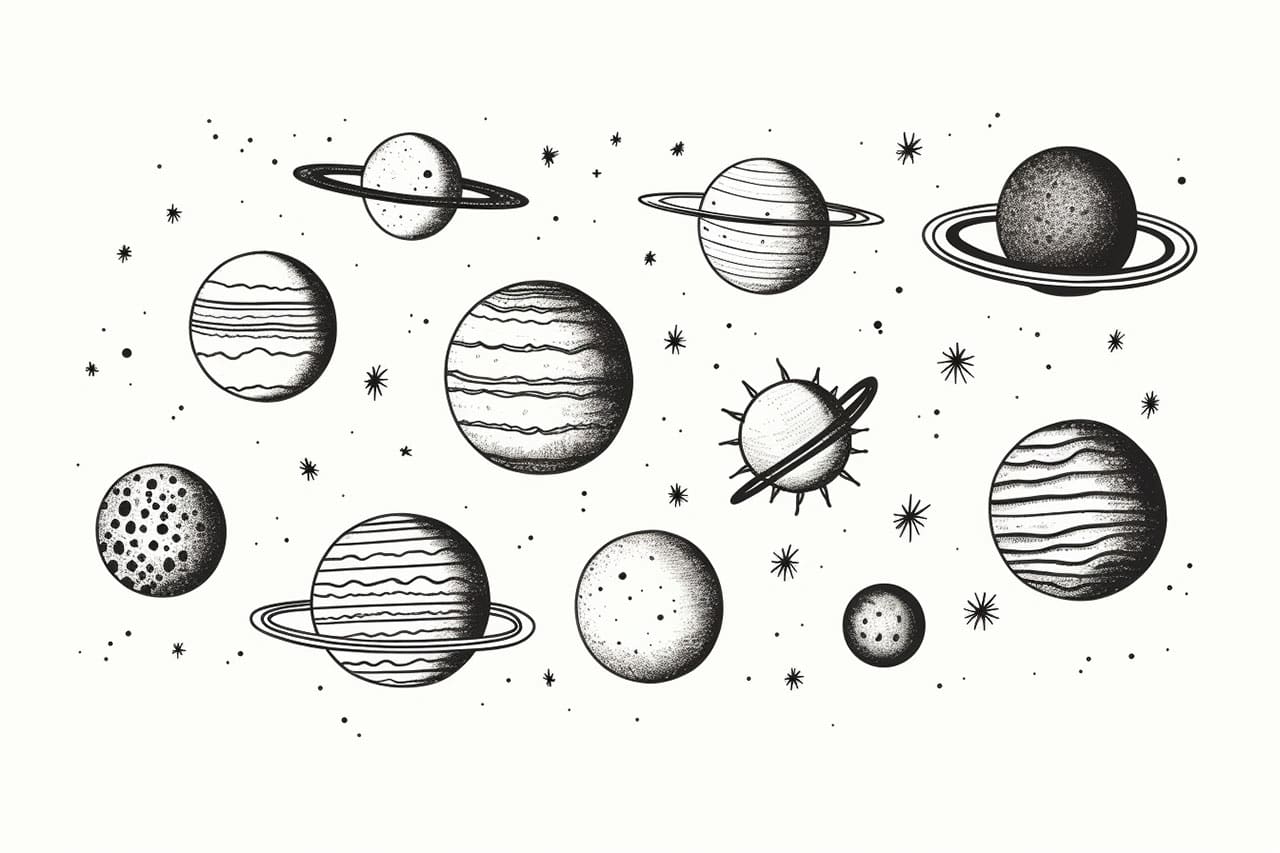Welcome to this step-by-step guide on how to draw planets! Whether you’re an aspiring artist or just looking to have some creative fun, drawing planets can be a fascinating and enjoyable activity. In this article, I will provide you with clear, clean, and concise instructions to help you create your very own planetary masterpieces. So, let’s embark on this artistic journey together!
Materials Required
Before we begin, let’s gather the materials you’ll need to draw planets:
- Drawing paper or sketchbook
- Pencil
- Eraser
- Colored pencils or markers
- Compass or circular object (such as a jar lid) for tracing circles
- Reference images of planets (optional, but helpful for accuracy)
Now that you have your materials ready, let’s dive into the step-by-step process of drawing planets.
Step 1: Sketch the Basic Outline
Start by lightly sketching a circle on your drawing paper using a pencil and a compass. This circle will serve as the outline of your planet. If you don’t have a compass, you can use a circular object like a jar lid as a template for tracing. Adjust the size of your circle based on the desired size of your planet.
Step 2: Add Texture to the Planet
To make your planet look more realistic, add texture by lightly sketching some lines and shapes across its surface. Planets often have interesting patterns, such as swirls or spots. Use reference images or let your imagination guide you in creating unique textures for your planet.
Step 3: Shade the Planet
Now, it’s time to add depth and dimension to your planet by shading. Determine the light source in your drawing, and use your pencil to darken one side of the planet where the light doesn’t reach as much. Gradually lighten the shading as you move towards the other side, where the light hits more prominently. This shading technique will create a three-dimensional effect.
Step 4: Add Details
To make your planet visually appealing, add some details. You can draw craters, mountains, or even rings if you’re drawing a gas giant like Saturn. Again, reference images will be helpful here to accurately capture the features of each planet. Take your time and pay attention to small details—they can make a big difference in the overall appearance.
Step 5: Color Your Planet
This is where your colored pencils or markers come into play. Choose the appropriate colors for your planet based on its real-life appearance or let your imagination take the lead. Start by lightly layering the base color on your planet’s surface, and then gradually build up the colors to create depth and variation. Don’t forget to blend the colors seamlessly to avoid any harsh transitions.
Step 6: Add Background Elements
To enhance the composition, consider adding some background elements like stars or space dust. Use your pencil or white gel pen to draw tiny dots or specks to represent stars. You can also add a touch of sparkle by gently smudging some silver or gold colored pencil or using metallic markers.
Step 7: Final Touches and Cleanup
Take a step back and evaluate your drawing. Make any necessary adjustments to the shading, colors, or details. Once you’re satisfied with the final result, use an eraser to gently remove any visible pencil lines or smudges, making your artwork clean and professional-looking.
Conclusion
Congratulations on completing your journey of drawing planets! By following these step-by-step instructions, you have learned how to create visually captivating planetary illustrations. Remember, practice makes perfect, so keep honing your skills and exploring your creativity.
Now that you possess the knowledge to draw stunning planets, the only limit is your imagination. Embrace the wonders of the universe, and let your artistic abilities soar. Happy drawing!









